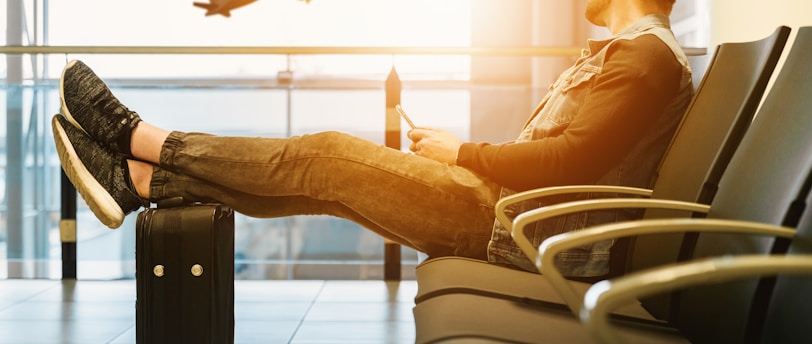Essential Advice for First-Time Air Travelers
LIFESTYLE


Preparing for the Journey
Embarking on your first air travel experience can be both exciting and daunting. Proper preparation is crucial to ensure a smooth journey. The first step is booking your flight. Familiarize yourself with the different ticket classes available, such as economy, premium economy, business, and first class. Each class offers varying levels of comfort and amenities, so choose one that best fits your budget and needs.
Travel insurance is an essential component of your travel preparations. It provides coverage for unexpected events such as trip cancellations, medical emergencies, and lost luggage. Investing in travel insurance can save you from significant financial losses and give you peace of mind during your journey.
Efficient packing is another critical aspect of travel preparation. Begin by understanding the rules and regulations for carry-on and checked luggage, which can vary between airlines. Review the airline-specific baggage policies to avoid unexpected fees or hassles. Typically, carry-on items are subject to size and weight restrictions, so ensure your bag complies with these guidelines. For checked luggage, be mindful of weight limits to avoid extra charges. Pack only essential items and consider using packing cubes or compression bags to save space.
Gathering necessary travel documents is a vital step that should not be overlooked. Ensure your passport is up-to-date and will remain valid for the duration of your trip. Depending on your destination, you may also need a visa or specific vaccinations. Research these requirements well in advance to allow sufficient time for processing. It is also wise to have photocopies of important documents, such as your passport, visa, and travel insurance, in case they are lost or stolen.
Lastly, plan your transportation to the airport. Whether you choose to drive, take a taxi, or use public transportation, allow ample time to account for traffic, parking, and security procedures. Arriving at the airport at least two hours before a domestic flight and three hours before an international flight is generally recommended.
By following these guidelines, first-time air travelers can ensure a well-organized and stress-free start to their journey.
Navigating the Airport
For first-time travelers, navigating the airport can be a daunting experience. However, understanding the process can significantly alleviate stress. It begins with the check-in process, which can be done either online or at the airport. Online check-in allows travelers to select seats and obtain boarding passes in advance, often saving time at the airport. Alternatively, airport check-in involves visiting a counter or kiosk to receive your boarding pass. Regardless of the method chosen, it is crucial to arrive at the airport early, typically two to three hours before a domestic flight and at least three hours for international flights. This buffer period ensures ample time to manage any unforeseen delays.
Security procedures are another critical aspect of the airport experience. Passengers must remove items such as laptops, liquids in containers larger than 3.4 ounces, and shoes during screening. To expedite this process, it is advisable to wear easily removable footwear and to have all electronic devices and liquids readily accessible. Familiarizing yourself with these requirements ahead of time can help ensure a smooth and efficient passage through security checkpoints.
Keeping track of boarding times and gates is essential to avoid missing your flight. Airports frequently update gate assignments, so it's important to monitor the display screens or use airline apps for real-time updates. Additionally, knowing the layout of the airport can help you locate amenities such as lounges, restrooms, and dining options. Many airports offer maps or directories to assist travelers in finding these facilities.
Managing potential stressors like delays or cancellations is also a part of the travel experience. In such instances, staying informed through airline communications and seeking assistance from airport staff can provide guidance. Planning for potential delays by carrying snacks, entertainment, and essential medications can make unexpected waits more manageable.
By understanding and preparing for these various aspects of the airport experience, first-time travelers can navigate the airport with greater confidence and ease.
In-Flight Tips and Etiquette
Once you have boarded the plane, efficiency and comfort become paramount. Finding and storing your carry-on luggage quickly not only helps you but also facilitates a smoother boarding process for everyone. Place your larger carry-ons in the overhead bin and keep essential items like a book, headphones, or a water bottle in the seat pocket in front of you for easy access during the flight.
Choosing the right seat can significantly impact your flight experience. If you prefer more legroom, consider booking an exit row or bulkhead seat. Aisle seats offer easier access to the restroom, while window seats provide a view and a surface to lean against if you plan to sleep. Staying hydrated is crucial, as the dry cabin air can lead to dehydration. Drink plenty of water, and avoid excessive caffeine and alcohol.
To maintain comfort during long flights, take short walks and stretch regularly. Simple exercises like flexing your ankles or doing seated twists can help improve circulation and reduce fatigue. Most airlines offer a variety of in-flight entertainment options, including movies, TV shows, music, and games. Take advantage of these amenities to make the time pass more enjoyably.
Respecting in-flight etiquette is essential for a pleasant journey. Be considerate of your fellow passengers by keeping noise levels down, avoiding strong odors, and sharing armrests. When reclining your seat, do so gradually and check behind you to ensure you are not intruding on someone's space. Use electronic devices responsibly by keeping them on airplane mode and using headphones to avoid disturbing others.
Common in-flight challenges such as ear discomfort, jet lag, and motion sickness can be mitigated with a few simple strategies. To alleviate ear pressure during takeoff and landing, try swallowing, yawning, or chewing gum. Combat jet lag by adjusting your sleep schedule slightly before your trip and staying hydrated. If you are prone to motion sickness, consider taking anti-nausea medication and focusing on a fixed point in the distance.
